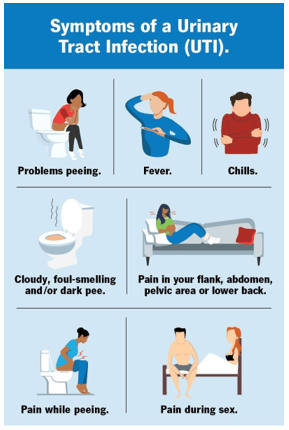A nurse is reinforcing discharge teaching with the parent of a newborn. Which of the following statements by the parent indicates an understanding of the teaching?
"I will notify my provider if my baby sleeps more than 10 hours per day."
"I will place my baby on his back for sleeping."
"I will change my baby's diaper every 4 hours."
"I will limit my baby's feedings so he does not become overweight."
The Correct Answer is B
Choice A Reason:
"I will notify my provider if my baby sleeps more than 10 hours per day." This statement is not in line with normal newborn sleep patterns. Newborns typically sleep for longer durations and wake up for feedings. It's essential for parents to follow their provider's guidance on feeding and sleep schedules.
Choice B Reason:
"I will place my baby on his back for sleeping." This statement indicates an understanding of safe sleep practices for newborns. Placing a baby on their back for sleep is recommended to reduce the risk of sudden infant death syndrome (SIDS).
Choice C Reason:
"I will change my baby's diaper every 4 hours." While it's important to change a baby's diaper regularly, the frequency of diaper changes may vary depending on the baby's needs. Diapers should be changed when wet or soiled, not necessarily on a strict time schedule.
Choice D Reason:
"I will limit my baby's feedings so he does not become overweight." It is not advisable to limit a newborn's feedings for concerns about becoming overweight. Newborns need to feed frequently to meet their nutritional needs and support healthy growth and development. Parents should follow their healthcare provider's guidance on feeding and monitor the baby's growth and weight appropriately.
Nursing Test Bank
Naxlex Comprehensive Predictor Exams
Related Questions
Correct Answer is ["A","D","E","F"]
Explanation
To decrease the risks for a urinary tract infection for this client, the nurse should take several actions. The nurse should encourage the client to drink 3,000 mL of fluid daily to help flush bacteria out of the urinary tract¹. The nurse should also empty the drainage bag when it is half-full to prevent bacterial growth¹.
Additionally, the nurse should review the need for the indwelling urinary catheter daily and use soap and water to provide perineal care¹.

Correct Answer is B
Explanation
People with SLE are often sensitive to sunlight and should take precautions to protect their skin. Limiting time in the tanning bed is important because exposure to ultraviolet (UV) light can trigger or worsen symptoms of SLE. Using an astringent on the face and cleansing with an antibacterial soap may not be recommended for individuals with SLE, as these products can be harsh on the skin and may cause irritation. However, patting the skin dry with a towel is a gentle and appropriate method to dry the skin without causing unnecessary friction or irritation.
Whether you are a student looking to ace your exams or a practicing nurse seeking to enhance your expertise , our nursing education contents will empower you with the confidence and competence to make a difference in the lives of patients and become a respected leader in the healthcare field.
Visit Naxlex, invest in your future and unlock endless possibilities with our unparalleled nursing education contents today
Report Wrong Answer on the Current Question
Do you disagree with the answer? If yes, what is your expected answer? Explain.
Kindly be descriptive with the issue you are facing.
